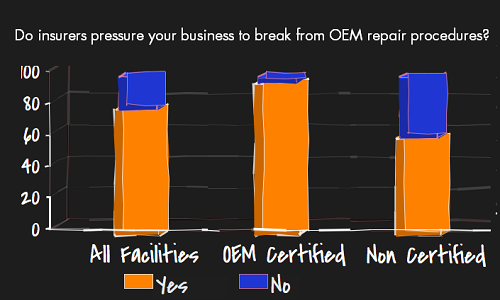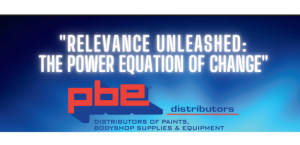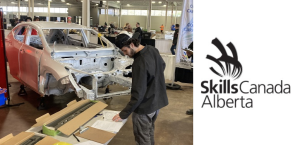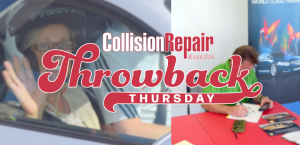August 20, 2019 — A preliminary study looking at how frequently OEM repair procedures are followed in Canadian collision facilities has found the vast majority of businesses are facing pressure not to make them.
According to the results of a readership survey, 8 in 10 collision facilities have been pressured by insurance companies to perform less expensive procedures rather than ones recommended by OEMs. The report also discovered that those collision businesses that have invested in OEM certifications are more likely to face this pressure.
According to the results, 96 percent of collision industry operators have faced pressure to perform non-OEM recommended repairs, compared to just 62 percent of respondents at facilities that were not OEM certified. Among respondents from OEM-certified facilities, 22 reported acquiescing to pressure from insurers or other groups and performing less expensive non-OEM repairs.
Several of these respondents credited their success in rebuffing auto insurers with their ability to provide data to insurers.
“Generally, if we have done our homework and presented the documents we do not have pushback. We run into questions or denials if we do not provide enough detail in the estimate,” one respondent from an OEM-certified facility that had not been cowed by insurers wrote.
Despite the advantages of being OEM-certified, some respondents reported that, while they were not being cowed by insurers, that doesn’t always mean that OEM repair procedures are being followed.
“On a 2018 Toyota Sequoia with a sideswipe, my estimate was $14,000 following all OEM procedures. The insurer came back with an estimate of $10,000. The customer authorized part order/tear down. The insurer paid me over $11,000 to take it somewhere else with disassembled parts. The competitor performed repairs ignoring OEM,” one respondent wrote.
Among respondents from non-certified facilities, that number was far higher, with 71 percent of respondents reporting bowing to insurer pressure.
Despite the additional challenges faced by non-certified facilities, many respondents did report continual efforts to ensure OEM procedures were being followed.
“We have been told numerous times that since they are paying, insurance procedures override OEM procedures,” said one anonymous respondent.
Check back tomorrow for more insights gleaned from the preliminary study.





































